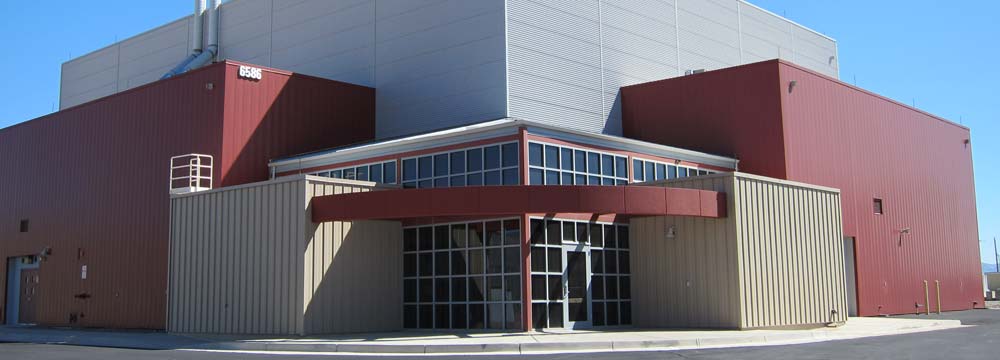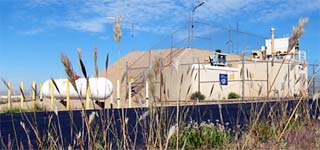
The Gamma Irradiation Facility (GIF) provides high-fidelity simulation of nuclear radiation environments for materials and component testing. The GIF can produce a wide range of gamma radiation environments (from 10-3 to over 6.5 x
10^2 rad/second) using cobalt-60 sources and can irradiate objects as small as electronic components and as large as an Abrams M1 tank. The GIF provides in-cell dry irradiations in three test cells and in-pool submerged irradiations.

The GIF annex, the Low-Dose-Rate Irradiation Facility (LDRIF), offers gamma (Cs-137) and neutron (AmBe) irradiation environments for long-term tests at low dose rates (from 10-6 to 10-1 rad/second for gammas and from 10-6 to 10-5 rad/second for neutrons).
Research and other activities
Radiation fields at the GIF are produced by high-intensity gamma-ray sources. The sources used at the GIF are cobalt-60 pins. The facility offers gamma dose rates from 10-3 rad/s to over 6.5 x 10^2 rad/s. The GIF can house a wide variety of gamma irradiation experiments with various test configurations and at different dose and dose rate levels. The in-air irradiations are conducted using three concrete test cells: two cells are 3 m × 3 m; one cell is 5.5 m × 9.1 m. Various objects are tested for their abilities to withstand the damaging radiation environments they might experience in space, near stored nuclear materials, or when they experience extreme radiation environments. Typical experiments at the GIF include the following:
- Testing for electronic-component hardness
- Materials-properties testing
- Investigations of various physical and chemical processes
- Testing and radiation certification of satellite and weapons system electronic components
- Dosimetry calibration
- Investigations of radiation damage to materials.
The GIF also offers a 5.5-m (~18-ft.) deep pool of demineralized water. Radioactive sources are held in a submerged irradiation fixture near the bottom of the pool, which can accommodate a variety of in-pool irradiation fixtures and source configurations. The GIF pool is used for submerged irradiation experiments, such as the following:
- Thermal- and radiation-effects studies
- Weapons degradation
- Reactor accident effects
- Electronic-component certification.
The GIF annex, the LDRIF, offers gamma (Cs-137) and neutron (AmBe) irradiation environments for low‐dose-rate, long‐duration testing of equipment, materials and components. The LDRIF includes two test cells and a setup/data acquisition lab. The LDRIF complements the GIF by expanding the range of available gamma dose rates from six to nine decades, offering gamma dose rates from 10-6 to 10‑1 rad/second. The neutron irradiation system consisting of the AmBe source and a large polyethylene chamber provides neutron dose rates from 10-6 rad/second to 10-5 rad/second.
Special features and equipment
To accommodate specific irradiation needs for experiments, the following custom features have been incorporated into the GIF design:
- Configurable radiation sources that provide different geometries for the source array (e.g., point, planar, and circular)
- Shielded windows that enable experiment observation during irradiation
- Remote manipulators that can be installed to facilitate experiment or source handling
- Pass-throughs in the shielding walls so that experiment power and instrumentation cables can penetrate the shield walls
- A movable wall that measures 5.5-m (~18-ft.) wide in the large cell, providing access for large components (e.g., space vehicles or military vehicles)
- Removable cell-roof-shield plugs that provide access for large and/or massive experiments
- An overhead bridge crane that spans the facility’s high bay and that can access the cells through the cell-roof-shield plugs
- Dry experiment canisters are available for in-pool irradiation experiments
- In-pool experiments can be heated and purged with air or other gas